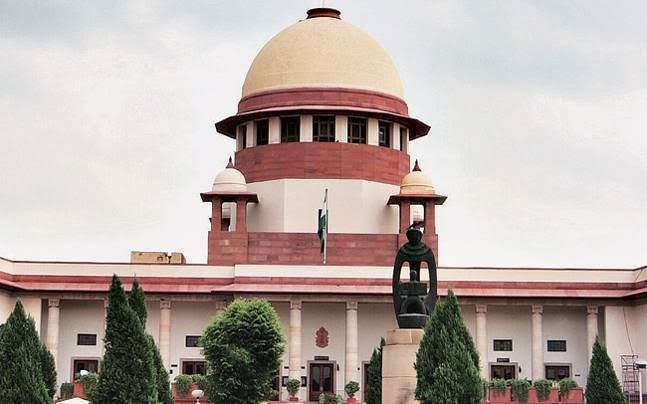Vishaka and ORS vs State of Rajasthan and Ors 1997

Author: Lakshita Mahajan (Student) Citation: AIR 1997 SC 3011
College: Institute of Law, Nirma University, Ahmedabad
- Abstract-
Foregone are the days, when the role of women was only limited to their households. Now, increasing number of women are taking up employment at various sectors, thereby increasing women employment rate. But one of the evils which comes in between this entire scenario is, fear of sexual harassment at workplace by the female workers. It is no doubt that that fear of sexual harassment, also called ‘Eve-teasing’ is one of the very factors which stops them in taking up roles at any firm/organisation. For this very fact, still there are many females who are highly qualified for a given position, but backs away. And there weren’t any sufficient legislations as well, to help women in this regard, till 2013. It was in the year 1997, when the Supreme Court of India gave its judgement in the Vishaka vs. State of Rajasthan case, in which they formulated the ‘Vishaka Guidelines’ to safeguard the fundamental rights of the women and protect them from sexual harassment at workplace. This was then succeeded by the POSH Act, i.e. The Sexual Harassment of Women at Workplace (Prevention, Prohibition, and Redressal) Act 2013, legislation enacted by the government to acknowledge and address the issue of sexual harassment faced by women at workplace, and protect them from this as well. This case of Vishaka and Ors Vs. State of Rajasthan and Ors, is thus considered one of the landmark cases in the history of the Indian Judicial System, which laid the foundation for the future legislation and for the first time, explicitly addressed this issue of sexual harassment faced by women at workplace.
- Introduction-
The judgement of the case was delivered on 13th August 1997 and the case was heard in The Supreme Court of India. The bench deciding the case consisted of CJI J.S. Verma, Sujata V. Manohar, and B.N. Kirpal. The petitioner in this case was Vishaka and Ors, while the respondent was State of Rajasthan and Ors. This is landmark case which deals with issue of sexual harassment faced by women at the workplace and how it results in the direct breach of the fundamental rights of the women. This case discusses various dimensions in this regard and is lauded for doing so as well.
- Facts of the Case-
Bhanwari Devi was from Bhateri, Rajasthan. She embarked to work under Women’s Development Project run by the government of Rajasthan in 1985, and worked as a ‘Saathin’. She had carried out commendable work and was supported for the same as well. But it was in the 1992, when she took up the issue of child marriage under a campaign by the state government. This particular action was not appreciated by the villagers as this campaign itself was subject to disapproval and ignorance by them even though they knew that child marriage was illegal. During this time, the family of Ram Karan Gujjar, carried on with their infant daughter’s marriage. Bhanwari Devi, to carry out her duty, asked the family to not do this, and trued very hard to persuade them, but to no avail. Thus, on 5th May, when the marriage was being performed, the police came to stop the said marriage. However, the marriage took the next day then, and no police action was taken against the Gujjar family. Later it was known that it was Bhanwari Devi who had reported this to the police. The family members were very agitated and wanted to take revenge. Later, on 22nd September, to fulfil their vengeance, five men, four from the Gujjar family, and one who was Ram Karan Gujjar’s friend, attacked Bhawari Devi’s husband and gang-raped her brutally. The local police tried their level best to not write her complain. The local doctor too refused to examine her, and she was examined only in Jaipur, that too after going through a lot.
After the complaint was filed, the trial court acquitted all the accused, who got the backing of the local MLA. This action grew a lot of agitation from the women organisations, all of which came forward to support Bhanwari Devi. Thus, resulting in the filing of a PIL, which was filed by a women rights group, known as ‘Vishaka’. This PIL had drawn the attention of the people to a concerning issue of sexual harassment of women at workplace and protection of their fundamental rights enshrined in the Article 14, 15 19 and 21.
- Issues-
This case raises various issues, including:
1) Does sexual harassment of women at workplace, a violation of the fundamental right to equality and right to life and liberty?
2) Can one refer to international conventions and treaties, where there exists no domestic law over a particular topic?
3) How can women be protected from sexual harassment at workplace?
- Arguments raised by both sides-
The petitioner filed a writ of mandamus and raised the argument that the immoral act of sexual harassment at workplace violates the fundamental rights of women under Article 14, 15, 19 and 21. The petitioner, Vishaka, put forth fact that how in India, there are insufficient laws to safeguard the safety of women at workplace, which often lead them to quit their work. Moreover, it also has an adverse impact on their mental well-being, if they continue to work in such a hostile environment. This also degrades the women’s will of working outside, thus stagnating women employment rate.
The respondent in this case, did something unconventional. The learned Solicitor General, supported the petitioner, and helped the Honorable court in figuring out effective means to curb sexual harassment at workplace, and also protect women from the same. Fali S. Nariman, who was the amicus curiae of the court along with two others, assisted the court in formulating the guideline for the same.
- Judgement of the case-
The Honorable court acknowledged the petitioners concern over lack of law in regard to protection of female from sexual harassment at workplace. They highlighted that in the same regard, we only have Section 354 and 354A of the Indian Penal Code, 1870 to deal with such matters. Hence, it was necessary to have some legislation on the same. For the present case, the court took reference from the international conventions. It made its reference to Beijing Statement of Principles on the Independence of Judiciary in the LAWASIA region, with which it concluded to act as a guardian of the citizen, upheld their right, and independently make laws in the absence of any legislative provision.
Furthermore, the Honorable Court made reference to the provisions of the Convention on the Elimination of All forms of discrimination against women. The court made reference to Article 11(1) (a) (f), where it mandated the states to take all the reasonable measures to eliminated all the discrimination against women in the employment sphere. The court also referred to Article 24 of the same convention which asks the state to adopt all the measures in the same regard to attain its fuller realization.
Thus, the court formulated ‘Vishaka Guidelines’ for the meantime, till an official legislation is made to protect women from sexual harassment at workplace. These guidelines defined what would be treated as sexual harassment, what would be the role of employer in this regard, provisions of disciplinary actions, measure to prevent it, redressal measure and a lot more. These guidelines, indeed played a major role in preventing sexual harassment at workplace, and even more in spreading awareness about the same. Moreover, these guidelines laid the foundation for The Sexual Harassment of Women at Workplace (Protection, Prohibition and Redressal) Act 2013.
- Conclusion-
Hence, this case indeed is treated as a milestone, where an important and concerning issue was put forth and discussed. This case also shows a marvelous spirit of Judicial Activism portrayed by the honorable Supreme Court in formulating guidelines in regard to protect women from sexual harassment at workplace where there exist no official legislations on the same. This showcased the Supreme Court as the true guardian of the citizen of the country and a beacon of hope, which stands tall and mighty to protect the interest of the citizens. Moreover, it also showcased true vigilance of the Vishaka group, women rights’ group, to take cognizance of the issue and file the petition in the court of law. Indeed, it was this case, and the ‘Vishaka Guidelines’ which formed the basis of the Sexual Harassment of Women at Workplace (Protection, Prohibition and Redressal) Act 2013.
References-
Citations of the Case- Vishaka & Ors vs State of Rajasthan & Ors AIR 1997 SC 3011



